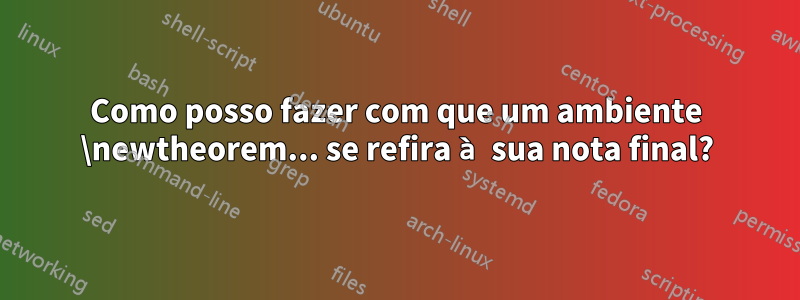
Atualmente estou usando \newtheoremstylepara produzir a seguinte saída:
Pergunta:Como posso modificar facilmente meu MWE (veja abaixo) para que oaestá nas minhas caixas QED diz "Nome da coisa", "Uma coisa diferente", etc.
Aqui está o que eu gostaria de ter:
Aqui está meu MWE:
\documentclass[12pt]{article}
\usepackage{amsthm}
\newtheoremstyle{underlinenonum}% name
{-1.5mm} % Space above, empty = `usual value'
{} % Space below
{} % Body font
{\parindent} % Indent amount (empty = no indent, \parindent = para indent)
{} % Thm head font
{} % Punctuation after thm head
{ } % Space after thm head: \newline = linebreak
{\noindent{\underline{\thmnote{#3:}}}}
\theoremstyle{underlinenonum}
\newtheorem*{subcase}{subcase}
\let\mtendsubcase\endsubcase
\renewcommand{\endsubcase}{\renewcommand\qedsymbol{\tiny\fbox{a}}\qed\mtendsubcase}
\begin{document}
\begin{subcase}[Name of Thing] This is a thing I would like to say.\end{subcase}
\begin{subcase}[A Different Thing] This is a \textit{different} thing I would like to say, and I need a QED to automatically reflect \textit{its} argument.\end{subcase}
\end{document}
Observe que desejo incluir "Nome da Coisa", "Uma Coisa Diferente" etc. como um argumento no subcaseambiente do teorema e fazer com que a caixa QED extraia automaticamente desse argumento.
Independentemente, tentei usar \fbox{\thmnote}}, etc., em vez de fbox{a}, mas cada iteração gera um erro. Eu também tentei o Googleeprocurando por sXe, tudo sem sucesso.
Editar 1:Conforme observado nos comentários abaixo, eunãodesejo digitar manualmente os argumentos estáticos nas caixas QED, porque haverá vários desses ambientes usados sucessivamente e gostaria que cada caixa QED refletisse seu respectivo arquivo thmnote.
Responder1
Envolva o ambiente semelhante ao teorema em um novo onde você possa absorver o nome com mais facilidade e usá-lo como desejar.
Mudei a sintaxe para subcaseter um argumento obrigatório, que é semanticamente mais sólido. E retirei o sublinhado: desculpe, mas não aguento.
\documentclass[12pt]{article}
\usepackage{amsthm}
\newtheoremstyle{underlinenonum}% name
{-1.5mm} % Space above, empty = `usual value'
{} % Space below
{} % Body font
{\parindent} % Indent amount (empty = no indent, \parindent = para indent)
{} % Thm head font
{} % Punctuation after thm head
{ } % Space after thm head: \newline = linebreak
{\noindent\textbf{\thmnote{#3:}}}
\theoremstyle{underlinenonum}
\newtheorem*{subcaseinner}{subcase}
\newenvironment{subcase}[1]
{%
\renewcommand\qedsymbol{\subcaseqed{#1}}%
\subcaseinner[#1]%
}
{\qed\endsubcaseinner}
\newcommand{\subcaseqed}[1]{\fbox{\tiny #1}}
\begin{document}
\begin{subcase}{Name of Thing}
This is a thing I would like to say.
\end{subcase}
\begin{subcase}{A Different Thing}
This is a \textit{different} thing I would like to say, and I need
a QED to automatically reflect \textit{its} argument.
\end{subcase}
\end{document}





